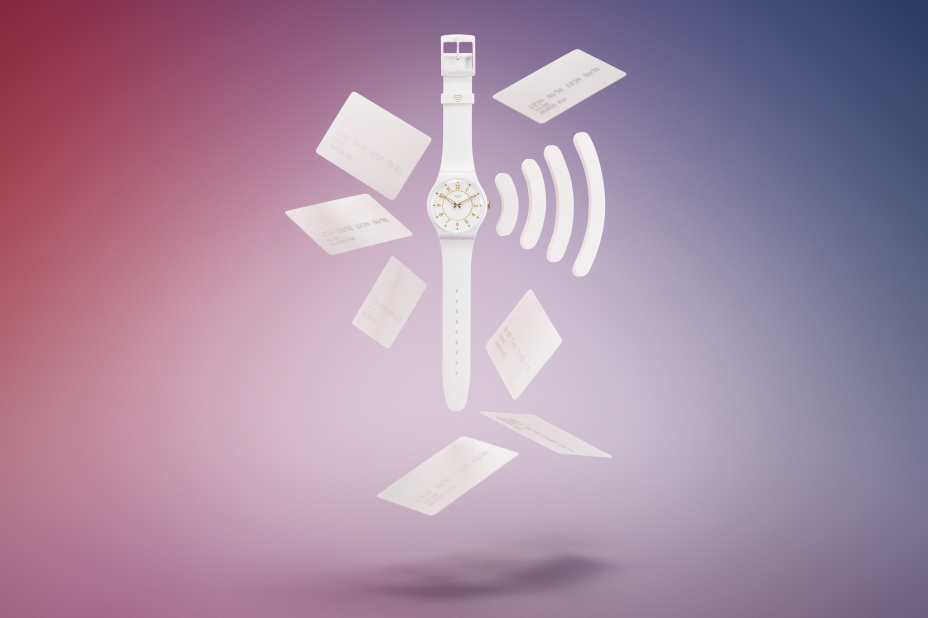
It’s not just your smartwatch or phone that can be used for mobile payments — now your special Swatch watch can be too, with the continued launch of its Swatchpay (which the company stylizes as SwatchPAY!, complete with exclamation mark) technology. Working with Mastercard, Swatchpay launches today in Switzerland, and not just for credit card holders but for debit cards and prepaid cards too. Swatchpay first launched in China in 2017 when it was compatible with only a selection of credit cards.
If you’re familiar with Apple Pay, Google Pay, or Samsung Pay, Swatchpay works in a very similar way, but it’s a big step forward for devices that don’t have a data connection. Swatch and Mastercard have signed agreements with various Swiss banks — Swisscard, UBS, Viseca, Cembra Money Bank, Cornèrcard, and Swiss Bankers — to enable tokenization on a passive wearable device. Tokenization is the same system used for payments on connected smartwatches like the Apple Watch and the Samsung Galaxy Watch.
Tokenization is crucial for security as it keeps the card number and account information private, and instead uses a different number — the token — that’s unique to the device itself, to complete transactions. Payments are made in the same way as any other smartwatch, or contactless card. You wave the Swatch watch over the payment terminal and an NFC chip behind the watch face takes care of everything. Remember, the Swatch watch doesn’t have a Bluetooth connection and isn’t directly linked to an app, so you don’t need your phone.
Watches and alternative technology
What about the watches? There are four new Swatch watches with Swatchpay technology, and you can see the designs in the images below and at the top of the page. In China, there are currently eight different models available, covering various styles and designs.
Swatch’s Swatchpay technology isn’t the only one of its kind, although the direct tokenization without the need to top-up a prepaid card does make it stand out. Barclays bPay technology provides mobile payments in non-smartwatches (along with other devices including key fobs and wristbands) made by Timex, Mondaine, and Kronaby among others. However, the chip is connected to a prepaid card that has to be topped up, either manually or automatically, adding an extra step into the process. Although some may prefer this slight disconnect from their bank account.
For now, Swatchpay is only being announced for Switzerland, but we’re hopeful other regions will follow in the future, especially with Mastercard’s assistance. Additionally, the Swatch Group owns many other watch companies and although the high-end luxury names may not feel Swatchpay technology fits in with their brand, others such as Calvin Klein, Tissot, and even kids watch maker Flik Flak may be more tempted to introduce a rebranded version in the future.
Updated on January 18, 2018: Added images of Swatchpay watches, and a promotional video.




